

SMOOTH
METERING RODS
HYDRODYNAMIC METERING
Metering with smooth rods – equivalent to metering with coater blades – is based on the hydrodynamic principle. The pressure in the dosing zone is of decisive importance for the coating volume.
This pressure is subject to the laws of fluid mechanics:
- Machine speed
- Geometry (diameter) of metering system
- Color rheology
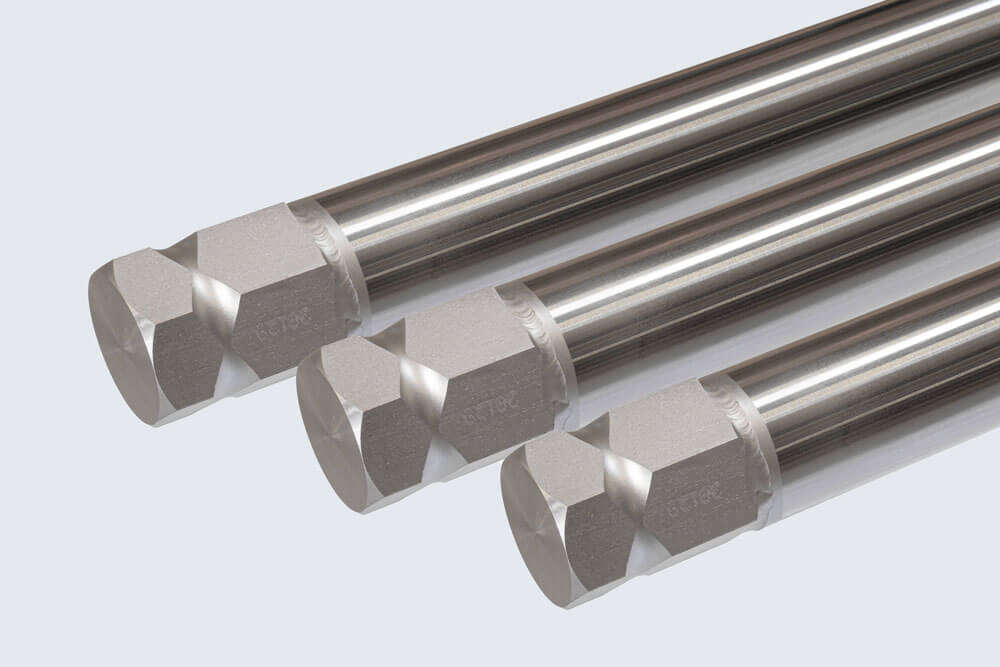
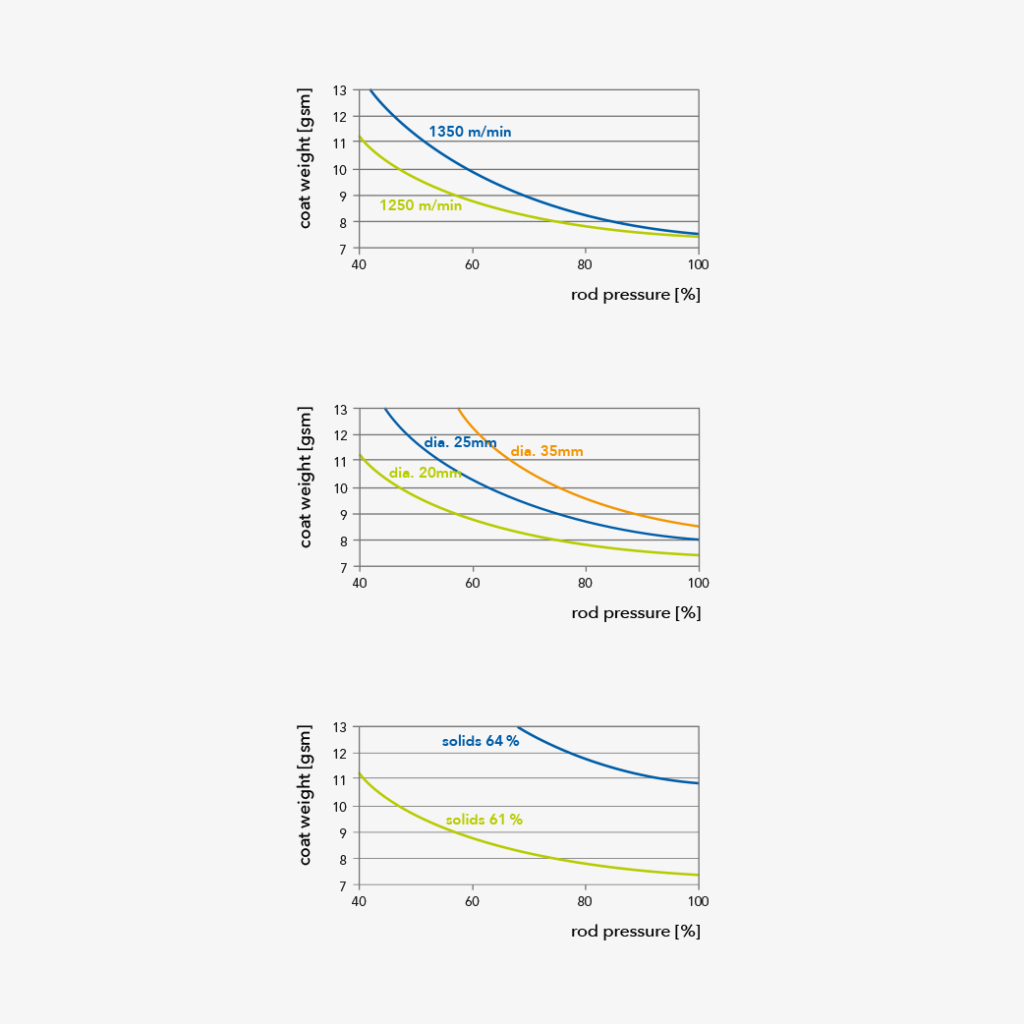
If the machine speed is increased by 100 m / min, the coat weight may increase by nearly 10 % from 8 g / m² to 8.8 g / m².
Larger diameters also lead to higher coat weights: 5 mm increase in diameter results in approx. 10 % more coated film.
Usually the colour rheology or the solids content is the dominant value for the coat weight: A “relatively” small increase of solids content by approx. 3 % can increase the coat weight by approx. 50 %.
In practice, stable production conditions are only possible at comparatively high contact pressures. If the coating volume is increased by an insufficient contact pressure, fluctuations in the coat weight will occur.
APPLICATION EXAMPLE FOR SMOOTH METERING RODS
Pre-coating of graphic papers with the filmpress
Smooth metering rods with diameters from 15 to 38 mm are preferred here. Smooth rod types have been particularly successful for high machine speeds and maximum solids content. In practice, chrome-plated metering rods can reach service lives of approx. two weeks. With ceramic coated metering rods the service life can be up to more than four weeks.
Coating of cardboards, folding boxboard, bottle carrier board and liners
Smooth metering rods with 10 and 12 mm diameters have been used for decades, usually for pre-coating and back-side coating. Due to the distinct edge wear, the respective metering rods often have an extra strong chromium layer or ceramic coating.

Learn more about+ Close-
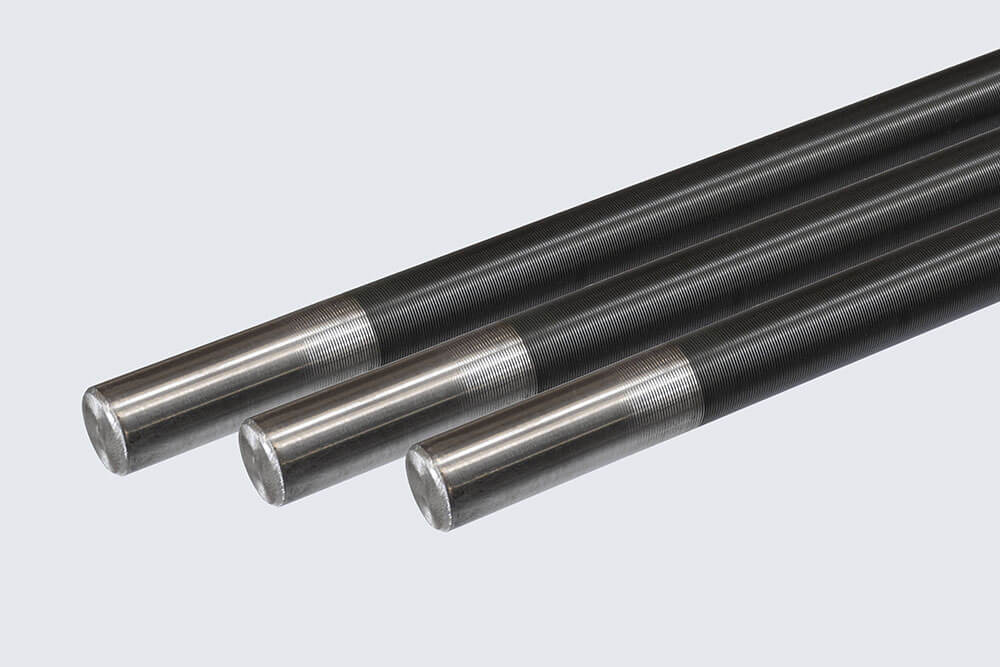
PROFILED
METERING RODS
VOLUMETRIC METERING
Metering with profiled rods is referred to as volumetric metering. During the metering process, the points of the profile are almost touching the sheet or applicator roll. The precise coating volume is determined by the geometry of the profile, i.e. by the rod profile cross section and distance.
The design of the profile also affects quality of coating and service life. Based on our experience, the profile can be optimized for every application. We offer profiles for a metering range of 3 – 150 ml / m – thus also for the most common metering of 15 – 50 ml / m.
On profiled metering rods, the linear load serves more as wear compensation than for setting of coating volume. Ideally, directly after the installation of a new metering system a high contact pressure is applied, which is continuously reduced until the minimum pressure is reached. This ensures a consistent coating volume at maximum service life of the metering system.
Our test series, laboratory evaluations, and decades of practical experience enable our customers to optimize their application processes in a targeted manner:
- Increased coating evenness = increased quality
- Longer service life = increased economic efficiency
- More intelligent design = new possibilities for innovative paper products

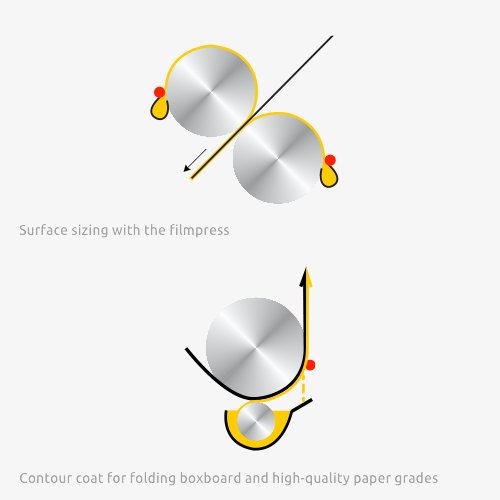
APPLICATION EXAMPLE FOR PROFILED RODS
Surface sizing with the filmpress
This is certainly the most important application for the profiled, chrome plated metering rod with a diameter of 10 to 15 mm. In contrast to the smooth metering rod, the profiled rod can be used in an extremely wide range of viscosity, making it ideal for very low viscosity starches. In 24/7 operation, a rod life of up to four weeks can be easily achieved if the starch is largely free from abrasive components.
Contour coat for folding boxboard and high-quality paper grades
Profiled metering rods are increasingly being used for very uniform color distribution and coverage. They achieve coating results whose quality is comparable to that of traditional air knives or modern curtain coaters. If all parameters are set correctly, ceramic-coated rods in particular achieve a very economical service life.
Learn more about+ Close-
LARGER
ROD DIAMETERS
IDEAL FOR INCREASED PRODUCTIVITY
Generally, 10 to 15 mm diameter metering rods with smooth surface are applied in direct coating, or with profiled surface in the filmpress. Depending on the proportion of abrasive components in the coating media, service lives of two to four weeks can be achieved. All this is common practice on paper machines all over the world. But in an increasingly fierce competition, every additional hour of production and minimization of waste counts.
Thus, metering rods must offer a longer service life and fewer inspection cycles. The technologically simple solution is to use metering rods with larger diameter.
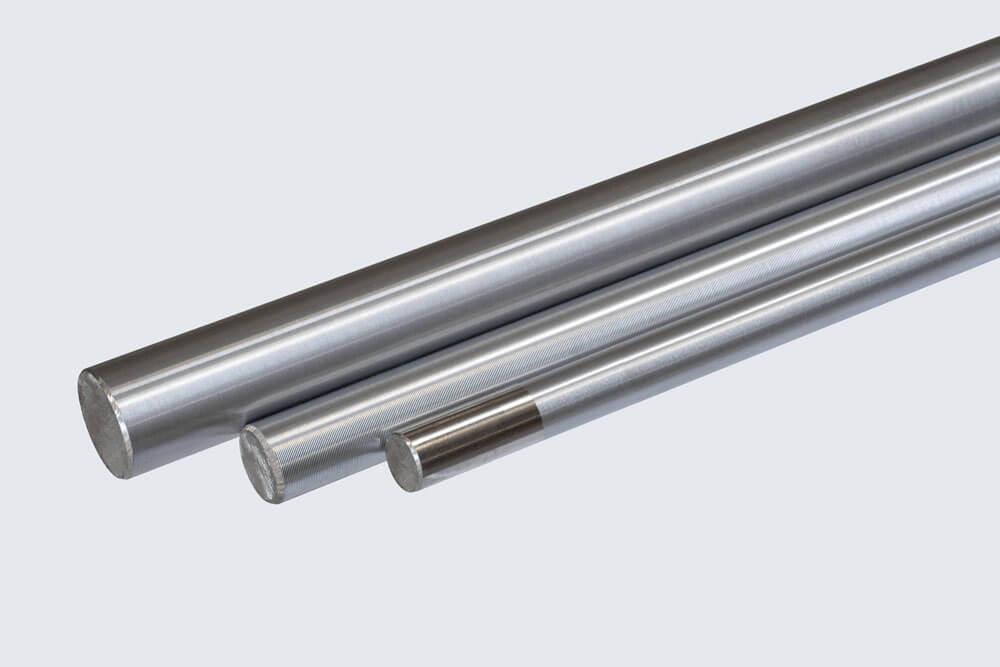
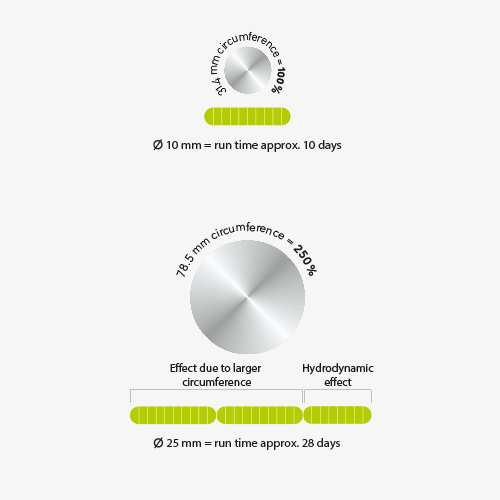
The effects
The forces responsible for wear act on a larger area, so the metering rods withstand load for a longer period.
The linear load of the metering rod against the sheet or backing roll is uniform and gentle. This prevents the rod from penetrating, reduces deformation and extends the life of the backing roll cover.
A hydrodynamic process is created between the metering rod and the sheet, similar to aquaplaning when driving a car – except that it is desirable here: A thin liquid film reduces friction and thus wear on the metering rod to practically zero.
Whereas the first two effects have proportional impacts on the service life of the metering rods, the hydrodynamic effects ensure a significant above average extension of run time. In addition, metering rods with large diameter are clearly.
Learn more about+ Close-
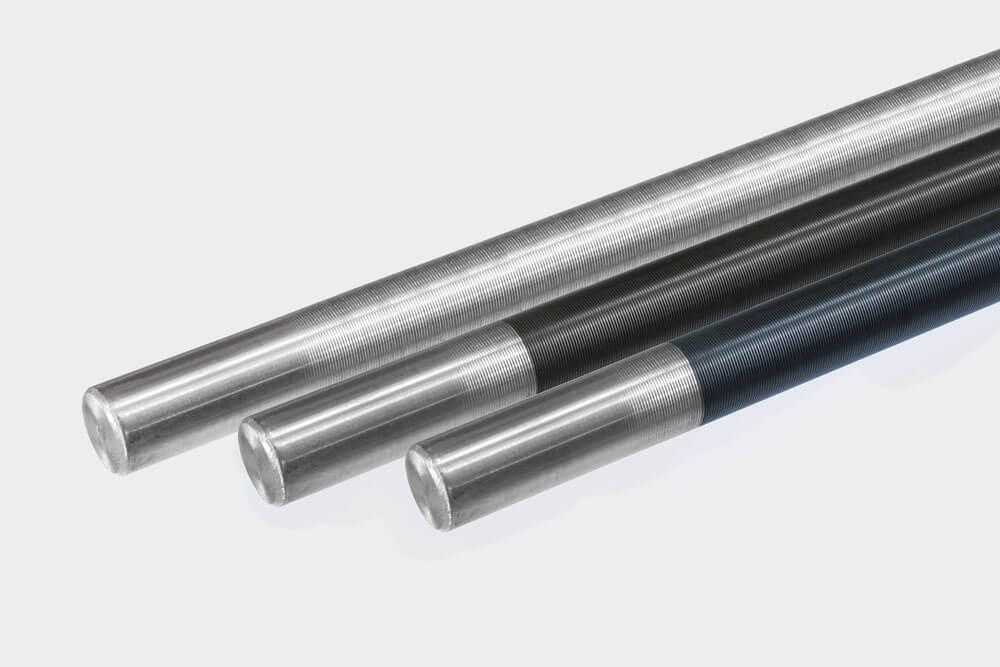
Chrome, Ceramic, Carbide
SPECIALISTS FOR WEAR RESISTANCE
The further development of proven manufacturing processes as well as material innovations lead to greater wear resistance and thus to greater competitiveness. This applies, for example, to hard chromium plating or the ceramic coating of wear parts.
Ultimately, the intended use and application determine the selection:
- Chrome coatings – the most economical solution for many applications
- Ceramic surfaces – for sophisticated processes with abrasive effects
- Carbide – when homogeneity and wear resistance are crucial
However, it is not possible to generally say which surface finish is ideal for a particular process, as there are very different process parameters:
- Composition of the paper
- Ingredients of coating media
- Coating method (direct or indirect)
- Production conditions of paper and coating machines
- Metering rod (diameter; profiled or smooth)
As specialist for metering systems we concentrate fully on these aspects of paper production. This also includes high quality consulting that is hard to match.

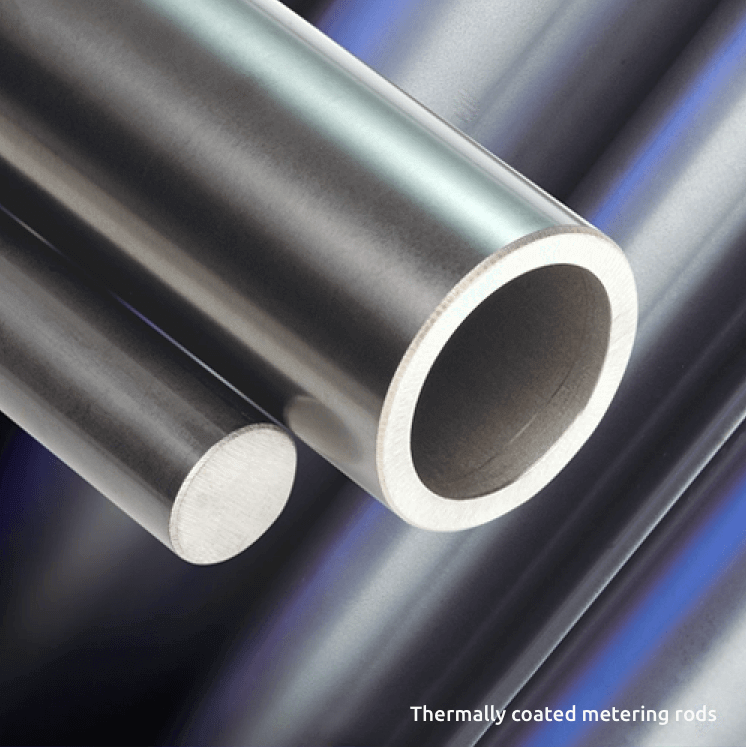
COMPARISON OF SURFACE FINISH
Hard chrome plated metering rods
Galvanic application methods enable a uniform layer thickness over the entire surface. This is a great advantage, especially for profiled metering rods with steep angle geometries.
Thermally coated metering rods
Ceramic coatings are applied by plasma or high-speed spraying method. The surfaces of the new generation of metering rods are significantly more wear-resistant, which extends their service life by a factor of three to seven.
Learn more about+ Close-
